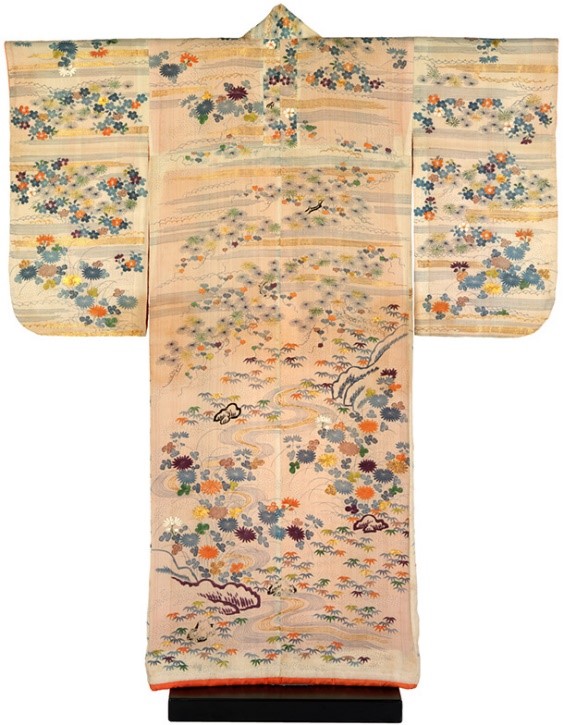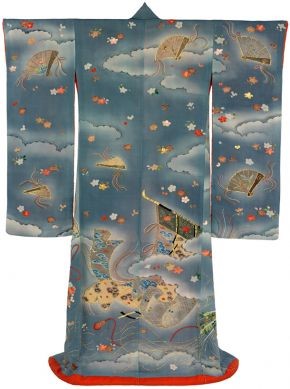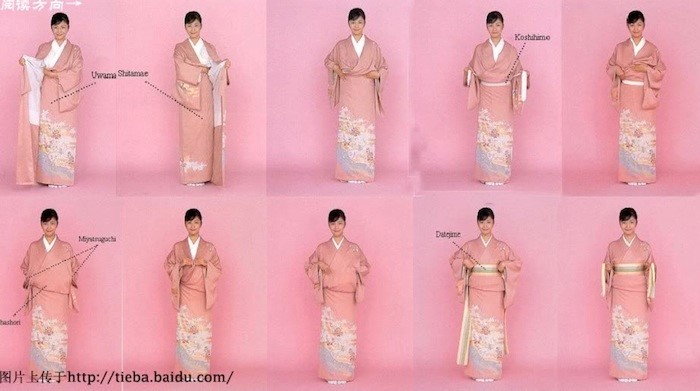More About Kimono
(Scroll to bottom to watch the tutorial video.)

During Kamakura period (1192-1338) and Muromachi period (1338-1573), the kimonos that wore were brightly coloured by both men and women.
Those kimonos were dressed by the warriors to represent their leaders in battlefield.
Then during Edo period (1868-1912), the Kimonos were made of crepe silk with paste resist decoration which known as Chaya-zome, stencilled imitation tie-dye that known as kata kanoko and embroidery in silk and metallic thread.
In the period, kimonos were acted as a uniform for samurais and each domain is categorized by colours and patterns of the kimono.
Besides that, during that period kimonos were used to shows their social status and richness of the top hierarchy of Tokugawa Japan. There were even have fashion competition of kimonos between the wives of rigid hierarchy to show the wealth and social status of their husband.

During the Meiji period (1868-1912), western cultures consists a big influence during that period.
Thus, the government of japan realised that japan need to adopt foreign cultures in order to compete with the western military and industrial.
Therefore, government encouraged their citizen to adopt western clothing and habits.
This is where most of the ladies in Japan able to afford to buy silk kimono and not forbidden from wearing them as the Tokugawa shogunate and the sumptuary laws were ended.
The reason that people able to afford to buy silk kimonos is because the Japanese were adopted to western science and technology and able to invent new techniques silk fabric that were greater qualities with reasonable prices.
Nevertheless, kimonos during that period are usually only wore at home or normal hours while for formal occasion or working hours the western clothing will be wore.
Nowadays, after the end of second world war most of the Japanese has been wearing western clothing for their daily wear yet the kimonos will also be wear for the special occasion such as weddings, funerals, tea ceremonies, or other special events which are summer festivals. In this generation, Kimonos are still very expensive which not easy to afford by the generations nowadays. However, there are places in Japan which allows tourists to rent kimonos and give them the experiences of wearing a kimono. This also able to provide them more knowledge about the history of kimonos and making of the kimonos.
Steps to Wear a Kimono

Always bear in mind that the left side of the kimono must always cover the right side of the kimono, because wearing the right side of kimono on top represents that the person is dead.
Not only that, when you wear the kimono remember to leave some space behind the neck.
Therefore, you have to drag the collar to the back so that your lower neck is able to be seen.